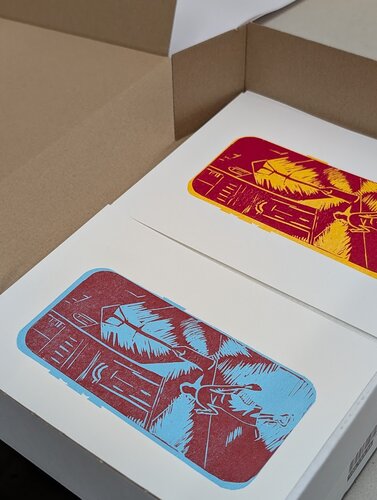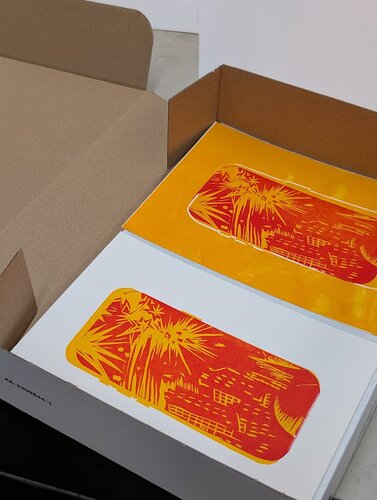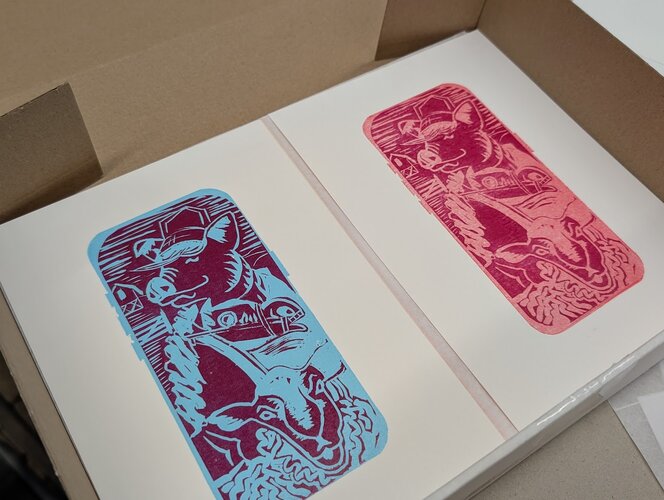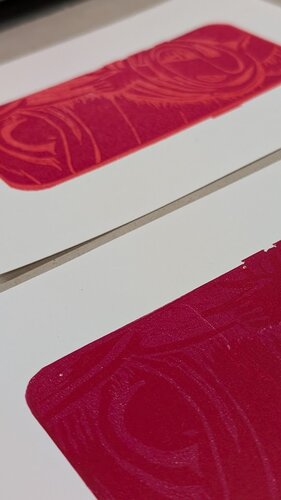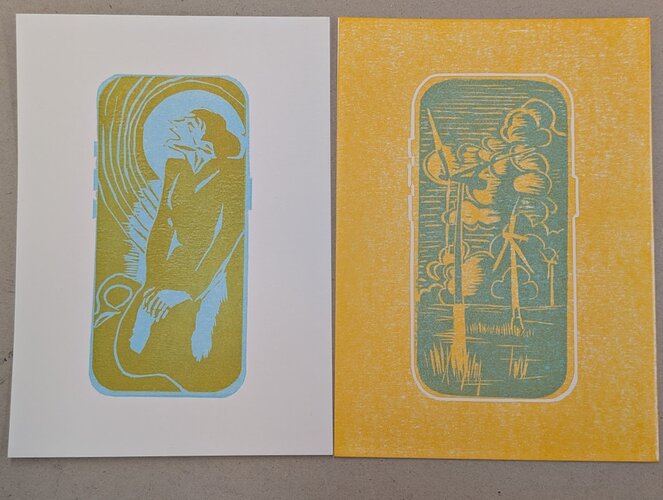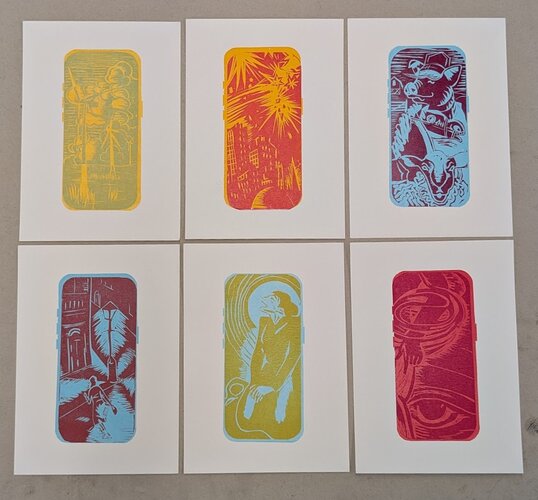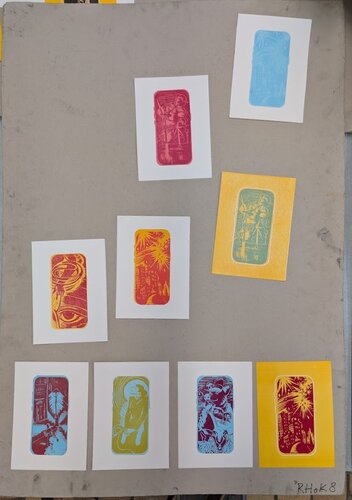Democracy or Infocracy?
Democracy or Infocracy?
Democracy or Infocracy?
"We now live in an era of infocracy and no longer democracy [...] Whoever knows how to steal our attention, wins both financially and politically."
So wrote Professor Ignaas Devisch in De Standaard* as President Trump was sworn into office, flanked by his liegemen Elon Musk, Mark Zuckerberg and other heavyweights of the tech-comms world.
I found myself wondering how much my attention and concerns about the world are shaped by forces unseen, conveniently delivered through my ever-present phone.
APPROACH
Art is arguably the antithesis of a democratic practice (“an expression of individualism” as Ai Weiwei put it). The question of whether a work of art could be created democratically therefore intrigued us at RHoK Academy and prompted me to invite friends, family and fellow printers at RHoK to connect together in an artistic 'phone conversation' about the state of democracy today, covering questions such as:
- Which issues influence my vote?
- Where do I get my information?
- Can it be trusted?
- How often do I come across contradictory views?
- Am I living in an information bubble?
- With whom do I share the information I gather and the opinions I form?
THEMES
My vision: to create a series of phone ‘screens’ responding to key issues prioritised by those who have engaged with me in the project. These range from existential threats such as the climate emergency and ongoing wars, to mental health, challenging gender stereotypes and the right of women to walk safely at night.
MASEREEL
Often, these concerns found timeless parallels in social democracy themes embraced by Frans Masereel, whose woodcuts I wanted to honour and echo, both in terms of the motifs and the language of his mark-making. (I knew immediately that I wanted to cut my images for this project, rather than rely on my usual brushwork and acid, because I feel that the immediacy and impact of Masereel’s images is inextricably linked to the characteristics of woodcut. I was also attracted by the dichotomy I could create between the high-tech subject matter and a manual technique, with all its inevitable imperfections and lack of consistency.)
COLOUR
Departing from Masereel’s traditional black and white however, I realised that I wanted to reflect the visually attractive and arresting images that flash up on our phone screens today. But which colours to use? In the process of experimenting with inks, we saw that certain colour combinations affected how closely one had to look in order to discern an image against its background. (A colleague commented, “I like that we have to come near to the image in order to see the weeping figure, but then I feel we are intruding on her grief.”)
Different combinations evoked different emotions and caused fellow students to interpret the images in a variety of ways: e.g. Is the woman in my (deliberately ambiguous) street scene walking briskly and confidently across the street or scurrying home, feeling unsafe in the poorly lit road? Similarly, how do the colour choices affect how one perceives the kneeling figure? Is she weeping alone at some unspecified tragedy or baking in the overheated world? Do we see “cute farm animals” or Orwellian characters? Through presenting the same images in different colour combinations, I am commenting on how the same raw information can be edited and distorted by the algorithms that deliver our newsfeeds.
PRESENTATION
If this submission is selected for the exhibition, I would like its visitors to be able to ask themselves the same questions as my collaborators. So, the series of images I have produced should be presented to viewers in a way that allows them both to be able to compare different colour treatments of specific scenes and to be drawn in by the attractive colour combinations created by the collection as a whole (just as we are influenced by the attractive and colourful images carrying messages to us via our phones).
Whilst respecting these two principles, the presentation format can be adapted to suit different spaces e.g. displaying the prints in a rectangular patchwork of contrasting colours and images, but they could be arranged in a horizontal line, in groups, or spreading freestyle across a wall.
The pairings of images in the transportation box reflect the way in which I selected the final images: choosing pairs of images before spatially separating them on boards so that the linkages could be re-discovered and the images compared.
ENGAGEMENT
‘Infocracy’ lives on at RHoK as an ongoing collaborative project, with an open invitation to fellow students to contribute their view of the world and its issues using the blank Lino phone templates I provide. The first contribution, by Camille - the black on yellow sardine tin ‘human box’, is included in this submission.
This project also has the potential to engage exhibition visitors on the theme of ‘infocracy’ by offering them the chance to express the issues that concern them and/or motivate their votes. They could do this by customising their own blank phone ‘screens’ using templates that could be provided in the exhibition space. In this way, I hope that the conversation about democracy and Infocracy could be extended and developed.
…..
*20/01/2025 De Standaard. Ignaas Devisch, Professor of Ethics and Medical Philosophy, University of Ghent.

Sarah Conyers Barber
Ontdek open calls
Word uitgedaagd door heel diverse open calls of verspreid je eigen open call hier.
Vind kunstenaars
Zoek naar kunstenaars in je buurt of naar werk in een specifieke techniek.
Ontwerp: Studio Mast | Website: eps en kaas

